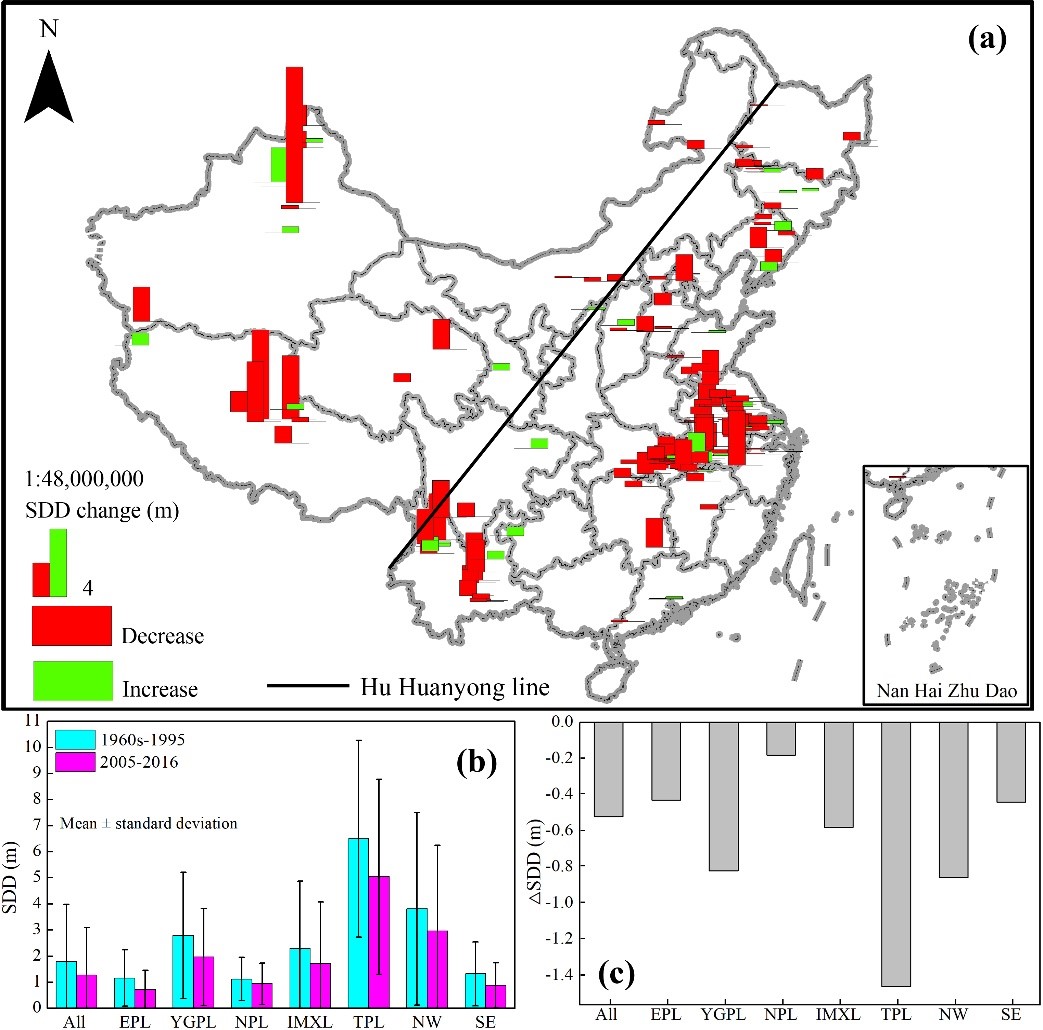Radiation dimming and decreasing water clarity fuel underwater darkening in lakes
Long-term decreases in the incident total radiation and water clarity might substantially affect the underwater light environment in aquatic ecosystems. However, the underlying mechanism and relative contributions of radiation dimming and decreasing water clarity to the underwater light environment on a national or global scale remains largely unknown. Here, we present a comprehensive dataset of unprecedented scale in China’s lakes to address the combined effects of radiation dimming and decreasing water clarity on underwater darkening. Long-term total radiation and sunshine duration showed 5.8% and 7.9% decreases, respectively, after 2000 compared to 1961–1970, resulting in net radiation dimming. An in situ Secchi disk depth (SDD) dataset in 170 lakes showed that the mean SDD significantly decreased from 1.80 ± 2.19 m before 1995 to 1.28 ± 1.82 m after 2005. SDD remote sensing estimations for 641 lakes with areas ≥ 10 km2 showed that SDD markedly decreased from 1.26 ± 0.62 m during 1985–1990 to 1.14 ± 0.66 m during 2005–2010. Radiation dimming and decreasing water clarity jointly caused an approximately 10% decrease in the average available photosynthetically active radiation (PAR) in the euphotic layer. Our results revealed a more important role of decreasing water clarity in underwater darkening than radiation dimming. A meta-analysis of long-term SDD observation data from 61 various waters further elucidated a global extensive underwater darkening. Underwater darkening implies a decrease in water quality for potable water supplies, recession in macrophytes and benthic algae, and decreases in benthic primary production, fishery production, and biodiversity.


Spatial distribution of SDD differences during 2005–2016 compared to the 1960s–1995 (a), comparison of SDDs before 1995 to after 2005 according to the five geographic lake zones and the Hu Huanyong Line (b and c) for the dataset of 170 lakes.
All: all lakes; EPL: Eastern Plain Lake zone; YGPL; Yunnan-Guizhou Plateau Lake zone; NPL: Northeast Plain Lake zone; IMXL: Inner Mongolia-Xinjiang Lake zone; TPL: Tibetan Plateau Lake zone; NW and SE represent results for lakes in the northwestern and southeastern regions of the Hu Huanyong Line.
Yunlin Zhang, Boqiang Qin, Kun Shi, Yibo Zhang, Jianming Deng, Martin Wild et al., 2020. Science Bulletin. DOI: https://doi.org/10.1016/j.scib.2020.06.016
